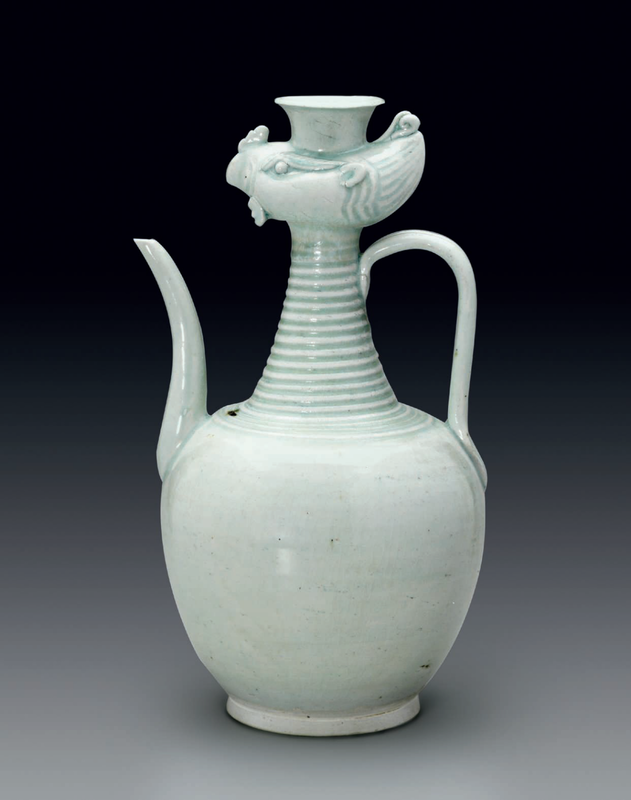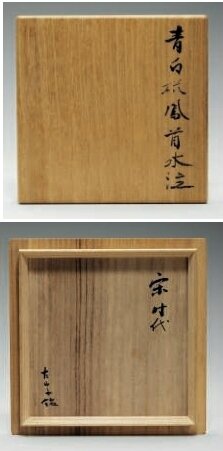A very rare carved Qingbai 'Phoenix' ewer, Southern Song Dynasty (1127-1279)
Lot 1160. A very rare carved Qingbai 'Phoenix' ewer, Southern Song Dynasty (1127-1279), 12 ½ in. (31.8 cm.) high. Estimate USD 60,000 - USD 80,000. Unsold. © Christie's Images Ltd 2017
The bulbous body rises to a tapering ribbed neck surmounted by a phoenix head, and has a strap handle opposite the short, curved spout. The ewer is covered overall in a glaze of pale blue tone, Japanese wood box inscribed by Koyama Fujio (1900-1975).
Inscriptions by Koyama Fujio on box.
Provenance: In Japan prior to 1975.
Note: The form of the present ewer was inspired by earlier sancai-glazed Tang-dynasty phoenix-head ewers, which were themselves inspired by Sassanian metalwork vessels. Many of the qingbai examples were exported to Southeast Asia, including several known pieces such as the example at the Brooklyn Museum, illustrated by A. Poster in Journey through Asia: Masterpieces in the Brooklyn Museum of Art, New York, 2003, p. 59, no. 9. See, also, two examples from Indonesia illustrated by Gakuji Hasebe in Ceramic Art of the World, Tokyo, 1977, pp. 31 and 295, no. 24 and fig. 180.
This ewer was examined by Fujio Koyama (1900-1975), one of the most well-known scholars of Ding ware, who was also the former director of the Tokyo National Museum, who assisted with the excavation of ding kilns circa 1930s. The box bears his inscription on both sides of the cover, referring to the ewer as Qingbai ware from the Song dynasty.
Christie's. Fine Chinese Ceramics and Works of Art, 14 - 15 September 2017, New York

/https%3A%2F%2Fprofilepics.canalblog.com%2Fprofilepics%2F1%2F0%2F100183.jpg)
/https%3A%2F%2Fstorage.canalblog.com%2F03%2F02%2F119589%2F96711876_o.jpg)
/https%3A%2F%2Fstorage.canalblog.com%2F11%2F31%2F119589%2F94773502_o.jpg)
/https%3A%2F%2Fstorage.canalblog.com%2F20%2F83%2F119589%2F94772815_o.jpg)
/https%3A%2F%2Fstorage.canalblog.com%2F26%2F72%2F119589%2F75604929_o.jpg)
/https%3A%2F%2Fstorage.canalblog.com%2F59%2F60%2F119589%2F26458628_o.jpg)





/image%2F1371349%2F20240412%2Fob_e3109f_2024-nyr-22642-0929-000-a-carved-qingb.jpg)
/image%2F1371349%2F20240411%2Fob_a3392b_2024-nyr-22642-0917-000-a-qingbai-foli.jpg)
/image%2F1371349%2F20240406%2Fob_b6629b_434639765-1646435522793127-51895182157.jpg)
/image%2F1371349%2F20240406%2Fob_53c757_435758154-1646430439460302-28934857903.jpg)